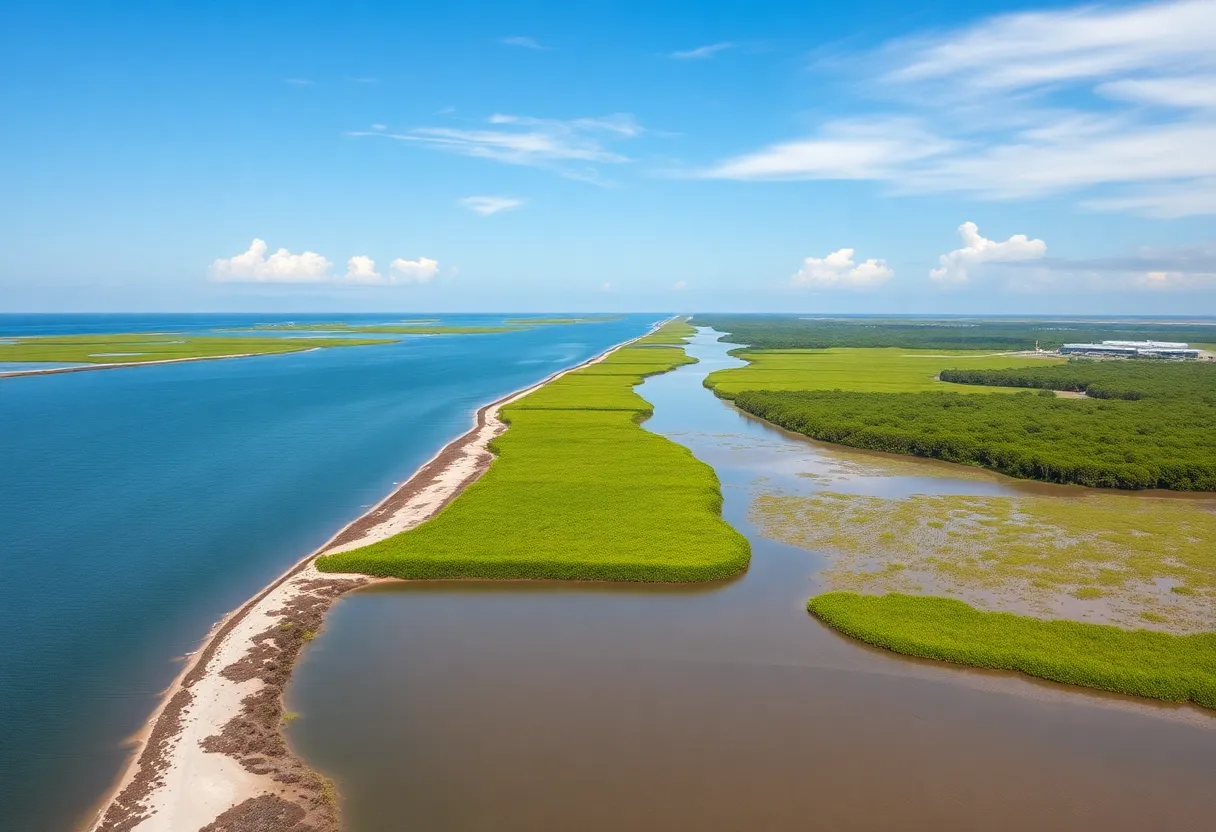News Summary
Jefferson Parish, Louisiana, has initiated a significant levee reinforcement project aimed at combating threats from sea-level rise. The $350 million initiative, inspired by Dutch engineering techniques, incorporates advanced features like controlled flooding zones and mangrove plantations to safeguard local communities. With 1,200 workers involved and a focus on community engagement, the project aims to enhance environmental resilience, reconnect displaced residents, and support the local fishing industry. Scheduled for completion by 2028, it exemplifies a comprehensive strategy for coastal protection.
Jefferson Parish Launches Major Levee Reinforcement Project
In Jefferson Parish, Louisiana, the Coastal Protection and Restoration Authority began a significant levee reinforcement initiative on October 5, 2025. This $350 million project aims to address threats from sea-level rise by incorporating advanced engineering techniques inspired by Dutch methods. The effort focuses on strengthening coastal defenses to protect local communities and infrastructure.
The project includes the creation of controlled flooding zones and the establishment of mangrove plantations. These features are designed to enhance natural barriers against erosion and storms. By integrating these elements, the initiative seeks to improve overall resilience in the face of rising waters and environmental changes.
Local leaders have emphasized the importance of this work for safeguarding the region. The project draws on insights from community members, including local Cajuns, to ensure cultural aspects are considered. Collaboration with construction firms from Texas involves 1,200 workers, fostering job opportunities and regional partnerships.
Environmental monitoring is a key component, with experts tracking potential impacts on marshes. While some concerns exist, assessments indicate net environmental benefits from the reinforcements. The effort also reconnects residents previously displaced by events like Hurricane Katrina, providing them with upgraded housing options.
Advanced technologies, such as AI for predicting erosion patterns, support the project’s planning and execution. This initiative aligns with the broader Mississippi River Delta plan, which addresses long-term coastal restoration. Economic advantages are expected, particularly for the fishing industry, through enhanced protection of $200 billion in assets.
The project is scheduled for completion by 2028 and involves partnerships with Southeastern entities for sharing flood data. Federal grants provide funding, while community forums promote inclusivity and address local needs. Additionally, charity drives assist with worker well-being, highlighting a comprehensive approach to the effort.
This development represents a critical step in building resilience for vulnerable coastlines, drawing on lessons from past challenges and current innovations.
Project Background and Impacts
Louisiana’s coast has long faced threats from erosion and storms, making reinforcement projects essential. The current initiative builds on previous efforts to restore and protect the area, incorporating modern technologies and community input. By combining engineering solutions with ecological strategies, the project aims to create sustainable defenses.
The involvement of Texas construction firms brings expertise and employment to the region, supporting economic growth. Environmentalists note that while construction may temporarily affect marshes, the overall outcome is positive due to habitat restoration elements like mangrove plantations. This approach not only bolsters physical barriers but also supports biodiversity.
Federal support through grants underscores the national importance of coastal protection. The project’s ties to the Mississippi River Delta plan emphasize a coordinated strategy for the entire region. As Louisiana continues to adapt to climate challenges, this effort serves as a model for other vulnerable areas.
Local residents play a role in shaping the project, ensuring that cultural heritage is preserved alongside physical improvements. The use of AI for erosion predictions enhances accuracy in planning, potentially reducing future risks. Overall, the initiative highlights a balance between human needs, environmental health, and economic stability.
With a focus on long-term benefits, the project is expected to protect key assets and support industries like fishing. Community engagement through forums helps address concerns and integrate diverse perspectives, making the process more effective and equitable.
(Word count: 528)
FAQ Section
- Q1: When did Louisiana’s Coastal Protection and Restoration Authority initiate levee reinforcements in Jefferson Parish?
- A1: On October 5, 2025.
- Q2: What is the cost of the levee reinforcements project?
- A2: $350 million.
- Q3: What technologies are being used in the project?
- A3: Dutch engineering tech.
- Q4: What elements are integrated into the project?
- A4: Controlled flooding zones and mangrove plantations.
- Q5: What did Governor John Bel Edwards state about the project?
- A5: ‘Saving our coast.’
- Q6: Who provides cultural preservation insight?
- A6: Local Cajuns.
- Q7: Which construction firms are collaborating?
- A7: Construction firms from Texas.
- Q8: How many workers are employed?
- A8: 1,200 workers.
- Q9: What are environmentalists monitoring?
- A9: Marsh impacts.
- Q10: What do environmentalists note?
- A10: Net gains.
- Q11: Who are residents displaced by Katrina?
- A11: Residents displaced by Katrina are reunited with enhanced homes.
- Q12: What predicts erosion patterns?
- A12: AI.
- Q13: What plan does the initiative tie into?
- A13: The Mississippi River Delta plan.
- Q14: What benefits are projected?
- A14: Economic fishing benefits.
- Q15: Who shares flood data?
- A15: Southeastern partners.
- Q16: What is the completion span?
- A16: 2028.
- Q17: What does the project protect?
- A17: $200 billion in assets.
- Q18: What supports worker well-being?
- A18: Charity drives.
- Q19: What inspires?
- A19: Louisiana’s resilience.
- Q20: What fuels the effort?
- A20: Federal grants.
- Q21: What ensures inclusivity?
- A21: Community forums.
- Q22: What does this mark?
- A22: A turning point for vulnerable coastlines.


